

We present our small town with a smile, because Drøbak is also known for its fantastic sunsets! Here you can sit by the blue Oslofjord on a boat or a cozy outdoor terrace where you enjoy a good meal and lift a glass against the sun that sets behind wooded hills to the west. White sails in the Sunni wind and the scent of salty lake also help to create the special Drøbak atmosphere on a beautiful summer evening. And maybe a woodpecker will come in with tonight's catch of fresh mackerel…
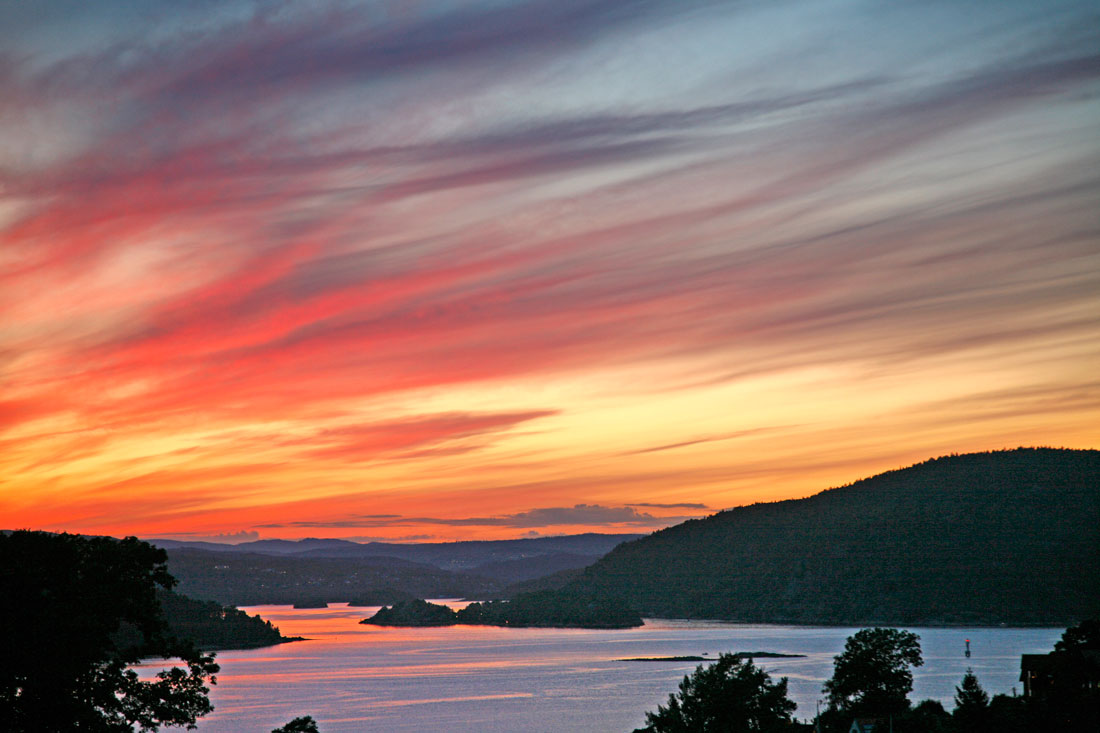
Winter also offers experiences in Drøbak: The fjord with frost smoke and drifting ice framed by a snow-covered landscape, cargo and passenger ships gliding past with lit lanterns - and the reflection from lighthouses and the illuminated Oscarsborg fortress in the winter darkness. Because now you are also in Santa's home village, his spirit hovers over the city, the forest and the fjord… we treat ourselves to a little nostalgia, humor and adventure!

Drøbak emerged during shipping in the 1700th and 1800th centuries. Here the sailing ships loaded large blocks of ice and timber for export and took home food and handicraft and industrial products. In 1814, Drøbak became a customs post and on August 20, 1842, Drøbak became the first urban area in Akershus County. The town then had close to 1000 inhabitants.

The name Drøbak comes from the city's location: It is steep up from the fjord to land and probably Drøbak is an abbreviation of the Norwegian "Drøye bakker" - "Dryga backar".
The small cluster of wooden houses grew year by year, and today we can look forward to authentic preserved wooden buildings from the 1700th century. The city center in Drøbak is today a protected place with strict architectural regulations to take advantage of the unique buildings. Fishermen, sailors, craftsmen and traders built their houses based on the opportunities and economic conditions of the time. And the small wooden buildings that once housed the poor along Fiskerstranda are today coveted treasures. Drøbak is in many ways Norwegian history in a nutshell - today's prosperity must be experienced against a background of previous generations' poverty and hardship.
In 1962, Drøbak's municipality was merged with the neighboring municipality of Frogn. Drøbak is today the central town in the municipality of Frogn, with about 15 inhabitants. Today we find a wide range of nightclubs, shops, public institutions and small businesses in Drøbak. Many of them are housed in the classic wooden buildings that we are so proud of.
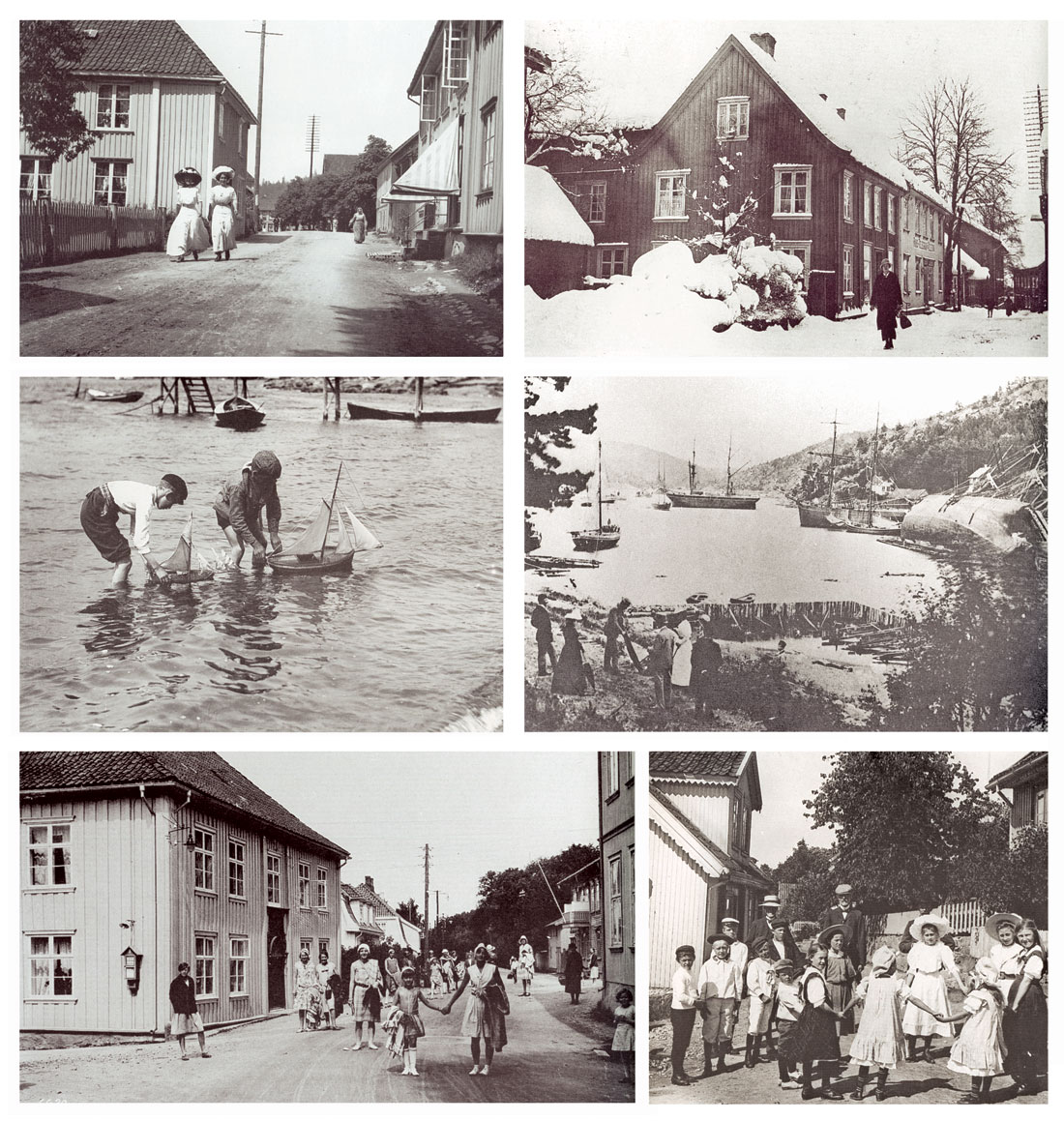
Old Drøbak conservation association stands today as a strong advocate for preserving and maintaining the city's old houses and environment. On the association's website, you can take a historical tour of Drøbak with pictures showing the city past and present. You can choose between Norwegian, English, German and Italian text.
The country's capital grew rapidly in the 1800th century and many sought refuge from the big city for beach holidays in the summer. Fully loaded steamboats docked in Drøbak with well-to-do guests from Christiania (which later became "Oslo" in 1925). Hotels, guest houses and shops experienced a flowering period in the summers. Drøbak's contact with the water once again became a source of development, now with beaches and outdoor life as a resource. Drøbak became a seaside resort with a spa in Varmbadet in Badeparken right next to the center. Drøbak is still a popular seaside resort with beaches, cliffs and diving towers - all with free admission.
Many famous Norwegian painters and authors have had Drøbak as a place of inspiration and residence. Here came the Nobel Prize winner Knut Hamsun and the poet Herman Wildenwey, as well as artists such as Kristian Krogh, the Bergslien brothers, Hans Fredrik Gude and Edvard Diriks - who was Edvard Munch's cousin. In our own time, the artist Ferdinand Finne is perhaps the most famous. His saying "The road is made while you walk".

Drøbak's history is closely linked to Oscarborg's fortress. Where the Oslo Fjord is at its narrowest, the foundation was laid for a fortress as early as 1643-45. Towards the end of the 1800th century, a large-scale expansion was carried out, and at the dissolution of the Union with Sweden in 1905, Oscarsborg was perhaps Norway's strongest military resource. That large parts of the fortress are built by Swedish masons is therefore a fun reflection.
But the fortress became most important in 1940. When Hitler Germany attacked Norway without a declaration of war on April 9, 1940, an improvised and poorly trained garrison managed to sink the German cruiser "Blücher" with cannon shots and torpedoes. The intruders got to taste their own medicine, because the cannons "Aaron" and "Joshua" were made in Germany. They were fired on the command of Colonel Birger Eriksen, who after the war was honored for his efforts.
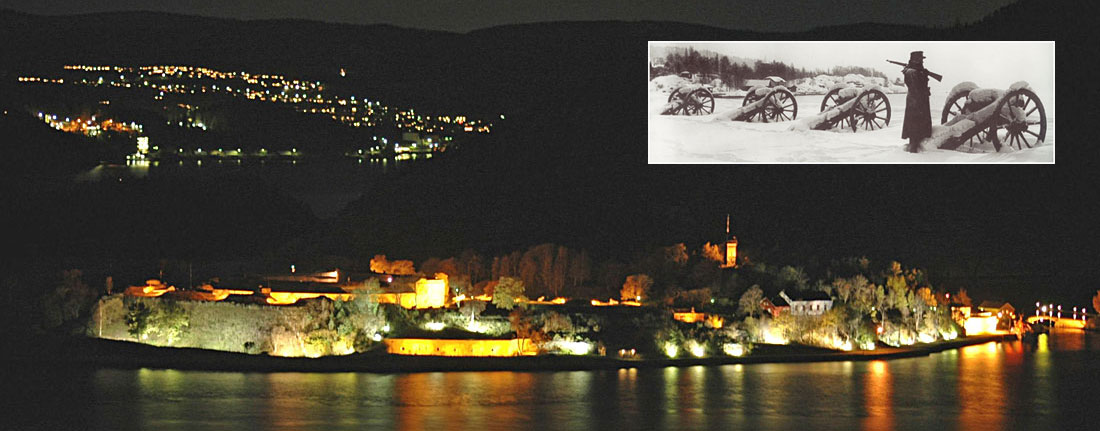
The Germans had gathered key people and the most important resources on board the Blücher. When the cruiser sank and took nearly 900 men into the depths, the invasion was delayed. The Norwegian royal family, the government, the Storting and Norges Bank's gold reserve were evacuated from Oslo, and this meant that a Norwegian war effort could later be carried out from London. Blücher is still located as a war grave at the bottom of the Oslo Fjord, at Askholmarna northeast of Oscarsborg. It was a ticking environmental bomb before it was drained of oil in 1994-95. Blücher's anchors are salvaged and one is today a memorial in Badeparken in Drøbak, next to the statue of Colonel Birger Eriksen.

Oscarsborg Fortress today has no military functions, but a military commander and a war flag. The fortress has an extensive defense museum and is an exciting experience with guided tours. Catering, hotels and guest harbors help to make the fortress something very special. The courtyard is used in the summer for large-scale cultural events, with professional opera performances as a specialty. From Drøbak, there are regular ferries to Oscarsborg.
The aquarium is built non-profit by Drøbak boat association and contains a variety of fish, shellfish and other species that can be found in Drøbaksundet. The goal is to recreate the environment and wildlife in the fjord and the aquarium is today the most visited attraction in the whole of Akershus County. Many schools arrange school visits to this mediation of nature for both children and adults. Today, the aquarium is run in collaboration with the Marine Biological Research Station in Drøbak, as part of the University of Oslo.
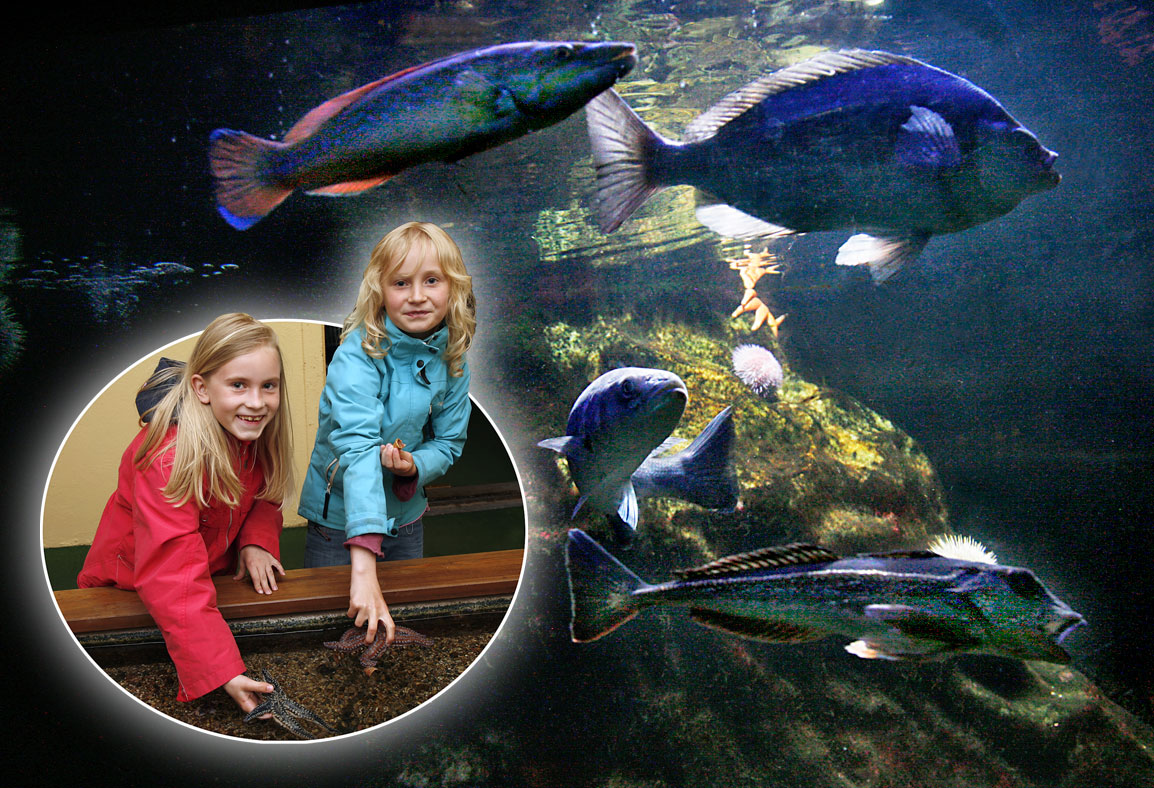
There are an incredible number of nightclubs and fun shops in Drøbak, and most of them you will find within walking distance from the center, Choose between a quick pizza or kebab, Norwegian home cooking or a gourmet restaurant. Maybe just a refreshing beer or a glass of wine? The possibilities are many.

The marina in Drøbak with its leisure and fishing boats is an oasis for everyone who wants to enjoy life and unwind. Here you can buy fresh shrimp and fish directly from the boat - unique to Drøbak as a small town in the inner Oslo Fjord. In the harbor there is life and movement all year round, especially in the summer. From the pier and the entire beach zone, you can try your luck at fishing. Drøbaksundet is one of the Oslo Fjord's best fishing spots. In Norway, fishing in the sea is free, but you can bring your own fishing rod.
At Sjøtorget in the southern part of the marina, you will find the Tourist Information. Here you can get maps, other information material and answers to your questions. Wherever you come from in Norway, Europe or the rest of the world, we are sure that you have a lot to look forward to with us.
It is easy to get here - Drøbak is only 40 minutes by bus from Oslo city center. In the summer, there is also a boat to Drøbak from Aker pier in Oslo.
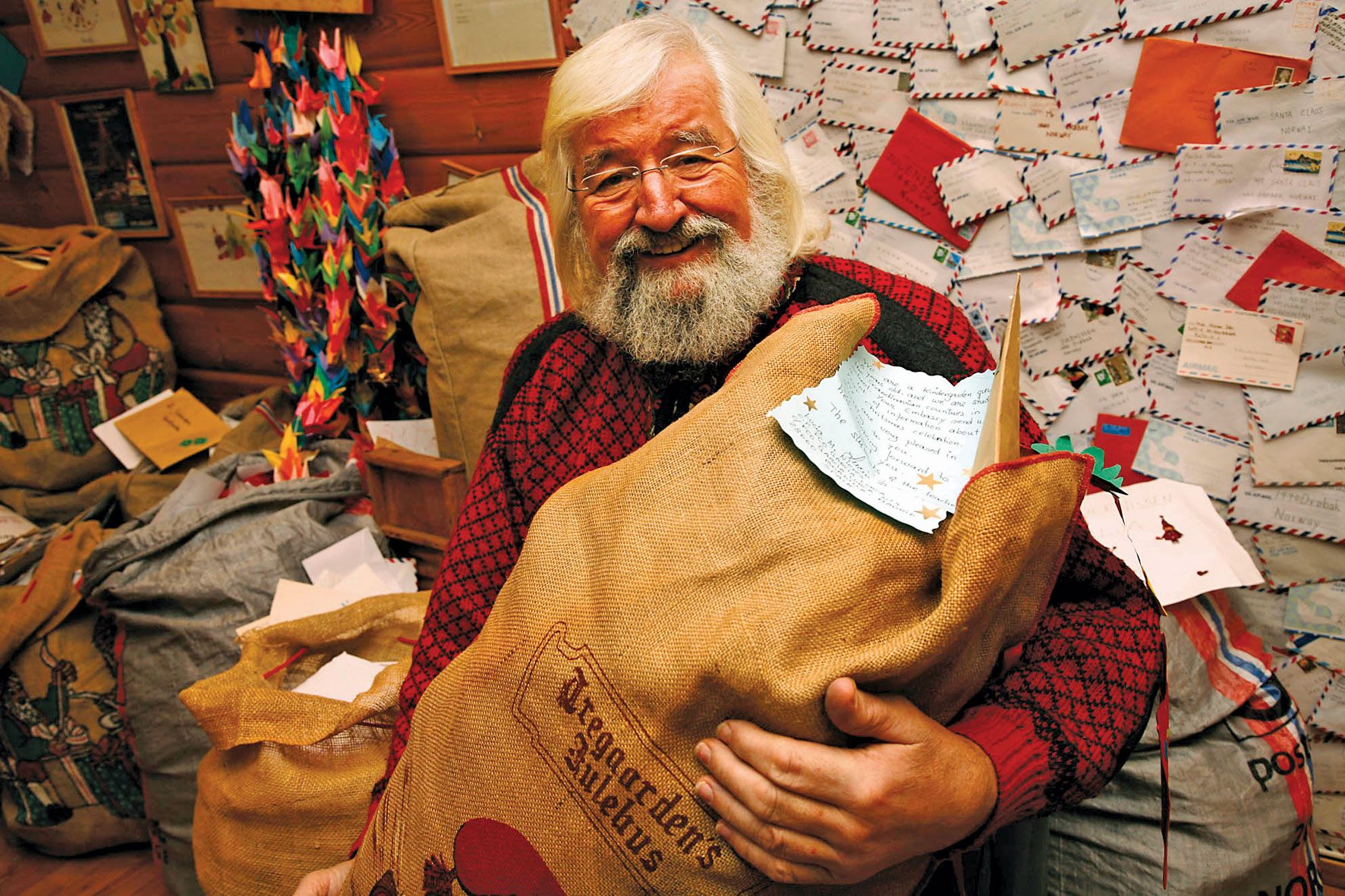
Swedish translation: Mattias Bergström / mb@ce.se